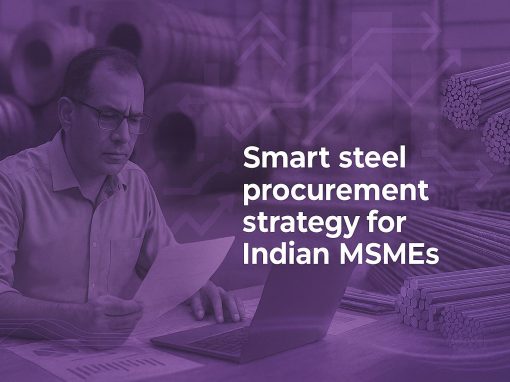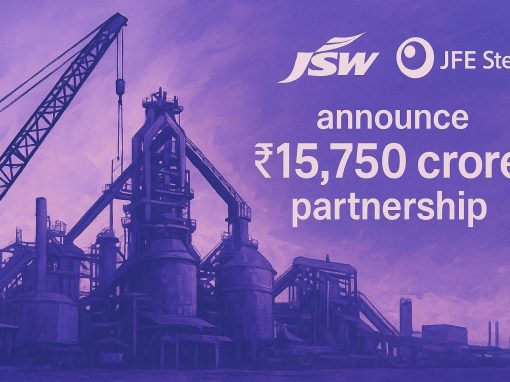Table of Contents
- Startup India
- Pradhan Mantri Mudra Yojana
- Women Entrepreneurship Platform (WEP)
- Stand-Up India Scheme
- A Scheme for Promotion of Innovation, Rural Industries and Entrepreneurship (ASPIRE)
- Credit Guarantee Trust Fund for Micro & Small Enterprises (CGT SME)
- Prime Minister’s Employment Generation Programme (PMEGP)
- ADEETIE – Supporting Energy Saving in MSMEs
- ME-Card – A Credit Card for Micro Businesses
- National Manufacturing Mission – Focus on Clean Tech
- Selecting the Right Government Scheme for Your MSME
When an entrepreneur starts a venture, it’s not an easy journey ahead. First time entrepreneurs face various challenges including lack of experience, funds, market connections, proper networks and channels and so on. In order to encourage new entrepreneurs and foster entrepreneurial skills, the government of India has launched several MSME schemes and initiatives for new entrepreneurs.
Along with government business loan schemes, these schemes for new business owners have been designed keeping their challenges and business obstacles in mind, and act as solutions to accelerate growth. This article will talk about some of the prominent MSME schemes for start-up businesses, how it benefits start-up growth and more.
Government schemes for entrepreneurs, MSMEs, and start-ups in India
1. Startup India
Startup India is an initiative by the government of India where DPIIT recognises companies that are less than 10 years old with turnover less than ₹100 crore as start-ups.
This initiative was launched by the government to foster entrepreneurship in the country. Once the company is recognised as a start-up, it can avail various benefits including tax exemption, IPR fast tracking, easier compliances, etc. Additionally, recognised start-ups have an added advantage in the government procurement process as the condition of previous experience in many tendering processes is excluded for these start-ups.
Moreover, Startup India Seed Fund scheme offers financial assistance to recognised start-ups at its early stage. These funds can be used for making proof of concept, prototype development, product trials, market entry, etc., and help in making commercialisation easy.
2. Pradhan Mantri Mudra Yojana
This is one of the most popular schemes launched by the government of India in 2015. The vision of the scheme is:
“To be an integrated financial and support services provider par excellence benchmarked with global best practices and standards for the bottom of the pyramid universe for their comprehensive economic and social development.”
The scheme helps in facilitating credit up to ₹10 lakh and is beneficial for micro enterprises. Borrowers can approach any commercial bank, small finance bank or NBFC to avail the loan. Under this scheme, the loan is categorised in three types.
- Shishu loans covering loans up to ₹50,000
- Kishor Loans covering loans above ₹50,000 and up to ₹5 lakh
- Tarun Loans covering loans above ₹5 Lakh and up to ₹10 lakh
Must Read: Udyogini Yojana Scheme – Empowering women entrepreneurs in India
3. Women Entrepreneurship Platform (WEP)
As the name suggests WEP initiative is designed to promote women entrepreneurs across the country. It offers various kinds of support to budding and existing women entrepreneurs. The scheme provides services such as free credit ratings, funding support, mentorship, ecosystem support, market linkages, etc.
Women entrepreneurs at the ideation stage or who may have just begun their entrepreneurial journey, can register under the scheme to avail benefits.
Note: There are also several business loans for women entrepreneurs offered by the government and private sector banks, to aid women in their entrepreneurial journeys.
4. Stand-Up India Scheme
This scheme offers financial support to SC/ST and women entrepreneurs to setup new enterprises. They can avail loan from ₹10 lakh to ₹1 crore. Availed funds can be used as working capital or term loan or combination of both. The loan is offered for greenfield projects in segments of manufacturing, services or trading.
In case it is a partnership firm or there are more than one business owners, the share of SC/ST or woman entrepreneur has to be at least 51%. Additionally, the loan eligibility requires your previous track record to be clear and as a borrower you should not be in default in the records of any bank or financial institution. This scheme is available at various commercial banks and eligible entrepreneurs can visit any nearest bank to avail the loan facility.
5. A Scheme for Promotion of Innovation, Rural Industries and Entrepreneurship (ASPIRE)
As the name suggests this scheme was launched to promote innovation, rural industries and entrepreneurship. ASPIRE scheme’s main objective is to help in setting up incubation centres and network technology centres to promote start-ups seeking innovation especially in the agriculture industry.
The scheme offers financial assistance for setting up Livelihood Business Incubation (LBI) and Technology Business Incubation (TBI). The government of India offers financial aid of up to ₹100 lakh for plants and machinery. Besides, financial aid, the scheme also aims towards imparting skills on entrepreneurship for setting up a business and making it self-sustainable.
6. Credit Guarantee Trust Fund for Micro & Small Enterprises (CGTSME):
CGTSME is a government business loan scheme for MSMEs that offers financial assistance of up to ₹2 crore to new businesses and start-ups. The collateral free loan at the best possible interest rate helps new and existing businesses to conduct their respective manufacturing, services and retail activities. The scheme can be availed through various banks and Non-banking Financial Institutes (NBFCs). Extent of guarantee coverage ranges from 75% to 85%.
Read more about CGTMSE Scheme 2025 with latest updates.
7. Prime Minister’s Employment Generation Programme (PMEGP)
Run by the Khadi and Village Industries Commission (KVIC), it helps individuals set up new businesses in manufacturing or services. Depending on where they’re from and their background, applicants can get a subsidy of 15% to 35% of the total project cost. The rest is financed through bank loans. The main aim is to create jobs, especially in rural and semi-urban parts of India.
Read more about PMEGP scheme 2025 with latest updates.
8. ADEETIE – Supporting Energy-Saving in MSMEs
The ADEETIE scheme, recently rolled out by the Bureau of Energy Efficiency, focuses on making small industries more energy efficient. Working with state governments, the plan targets 60 industrial clusters and 14 different sectors.
The scheme has a budget of ₹1,000 crore. Out of that, ₹875 crore is for interest subsidies to encourage investment in green upgrades. Another ₹50 crore is set aside for capacity-building and implementation support. MSMEs can also get help with things like technical guidance and energy audits so they can lower energy bills while being more eco-friendly.
9. ME-Card – A Credit Card for Micro Businesses
As part of the 2025–26 Union Budget, the government introduced a new credit card designed for micro-enterprises: the MSME Credit Card, or ME-Card. These cards offer up to ₹5 lakh in credit for registered businesses. The aim is to make it easier for small businesses to access flexible, short-term loans, especially for working capital. In its first year, 10 lakh cards are expected to be issued.
To make borrowing safer and easier, the government has also increased the Credit Guarantee limit from ₹5 crores to ₹10 crores. That means banks can lend more without asking for collateral.
10. National Manufacturing Mission – Focus on Clean Tech
The National Manufacturing Mission (NMM), announced in the latest budget, is all about strengthening manufacturing by MSMEs, particularly in clean-tech areas. That includes solar panels, EV batteries, wind turbines, and other energy-related equipment. The broader goal is to reduce dependence on imports and promote domestic production.
Key features include:
- Technology subsidies up to 50% in certain cases.
- Dedicated cluster support, such as ₹50 crores for the toy manufacturing sector.
- Better procurement access through public sector companies, giving MSMEs more opportunities to grow.
Selecting the right government scheme for your MSME
There are quite a few schemes that government offers for the growth of new businesses and start-ups. Here is how you can select a right one for your business.
- Draw a robust business plan.
- Analyse your shortcomings and business needs. For example, to launch a new product you might want to acquire certain skills, or you foresee being short of funds for marketing of newly developed product.
- Explore all the schemes and see which one offers best solution to your needs. For example, if you are considering to take credit, look for schemes that offer highest maximum credit limit provided, e.g., up to ₹50 lakh. Verify if that is sufficient for your business needs.
- Check all other terms and conditions and then opt for the best suitable scheme.
Whether you are an existing business owner or looking for ideas to start your MSME business, there are schemes and benefits available for you today to help you drive growth.
Empowering MSMEs to grow smarter
Tata nexarc delivers powerful solutions for MSMEs—discover tenders, logistics solutions, and streamline procurement. Everything your business needs, all in one place.
FAQs
Are MSME schemes for all sectors?
Is Udyam registration a must?
Can I apply to more than one MSME scheme?
I am the sole proprietor of a business. Can I still apply?
Do I need to give collateral for MSME loans?
Are there any tax benefits for MSMEs?
Can MSMEs get help in exporting?
Where can I find mentorship or advice?
Do rural entrepreneurs get the same benefits as urban ones?
Why do MSME applications get rejected?
Also Read:
MSME Sampark scheme
RAMP Scheme for MSMEs
SIDBI Loan schemes for MSMEs
MSME Innovative scheme
MSME Samadhaan
MSME Sambandh
Swati is a passionate content writer with more than 10 years of experience crafting content for the business and manufacturing sectors, and helping MSMEs (Micro, Small and Medium Enterprises) navigate complexities in steel procurement, and business services. Her clear and informative writing empowers MSMEs to make informed decisions and thrive in the competitive landscape.







